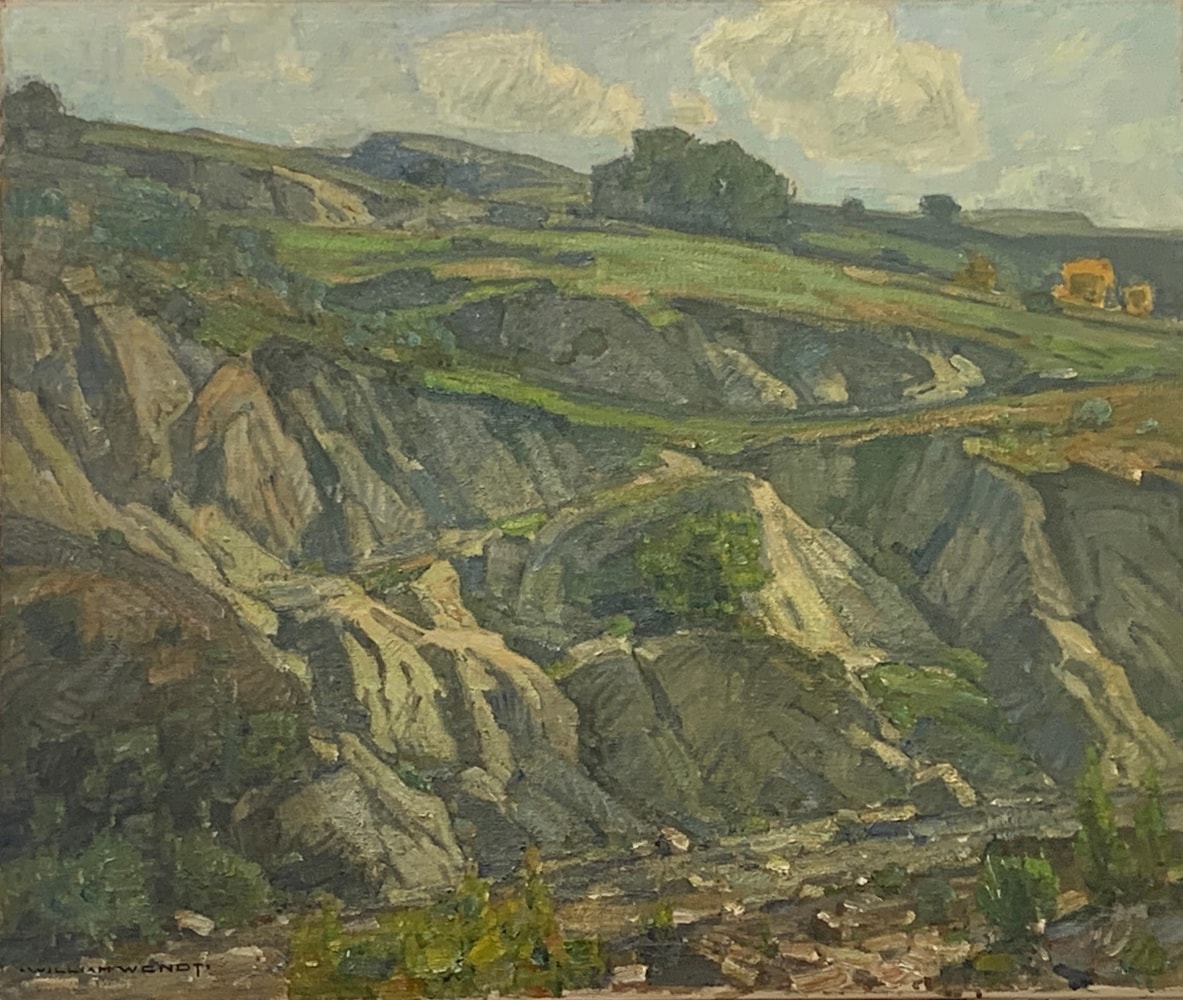1865 - 1946
One of California's best-known landscape painters of the late 19th and early 20th centuries, William Wendt was called the "Dean of Southern California" artists. His landscapes were especially known for rich greens and browns. In 1911, he became co-founder of the California Art Club, which he served as the second and fourth President from 1911 to 1919 and 1917 to 1918, respectively. This organization reflected his commitment to plein-air painting of the California landscape.
His style was impressionism, obviously influenced by Arthur Mathews's Decorative Style, and his landscapes seldom had figures in them. Indicative of the breadth of his reputation was his election in 1912 as an Associate of the National Academy of Design in New York.
He was born in Bentzen, Germany, and in 1880, immigrated to Chicago where, primarily self-taught, he studied briefly at the School of the Chicago Art Institute and worked as a commercial artist. His close friend was artist Gardner Symons, and they made several trips to Southern California between 1894 and 1906. Wendt's adoption of impressionism as a style "can almost be dated to 1896-97" when he and Symons "were painting together on the Malibu Rancho near Los Angeles." (Moure 159) Both men were in the avant-garde of American painters in that they were open to the Impressionist style that had begun in France in the mid-19th century. Southern California was a perfect location for depicting the bright colors, atmospheric conditions, and shimmering light characteristic of Impressionism.
In Chicago, Wendt was not a particularly successful artist, but he was well-received in California almost when he settled there in 1906. That same year, he married sculptress Julia Bracken, and they moved to Los Angeles, buying the studio home of Marion and Elmer Wachtel on Sichel Street. In 1913, he and Julia built a house in Laguna Beach, and they frequently exhibited together.
In California, Wendt was not a studio painter but worked outside, "en plein air," and explored the unique native landscape, often going into the wilderness. He revered deeply for nature, especially the unsettled wilderness, which he regarded as a place for silence and contemplation. Art historian Nancy Moure wrote that during the forty years of painting in California, Wendt's work became more assertive and bolder and that with his brush, he was carving "out the underlying structure of the mountains, delighting in the folds of the earth. . . .His colors also moved away from organic to stronger and purer tones; for a period, he seemed fascinated by a brilliant green. . . .These changes can be interpreted as personal growth or an attempt to update his style with the arrival of European Impressionists in Southern California." (161)
He also painted National Park landscapes in Washington state and Arizona, but, according to Peggy and Harold Samuels, he refused to paint the Grand Canyon, saying, "It is impossible."
As Los Angeles became increasingly populated, William Wendt pulled away from the active city, and, in 1919, settled in Laguna Beach until he died in 1946,
His works are in many collections, including the Union Club in Seattle, the Art Institute of Chicago, the Pasadena Art Institute, and the Springville, Utah Museum.
Sources: Askart.com
Edan Hughes, Artists in California, 1786-1940
Peggy and Harold Samuels, The Illustrated Encyclopedia of Artists of the American West
Nancy Dustin Wall Moure, California Art: 450 Years of Painting & Other Media

